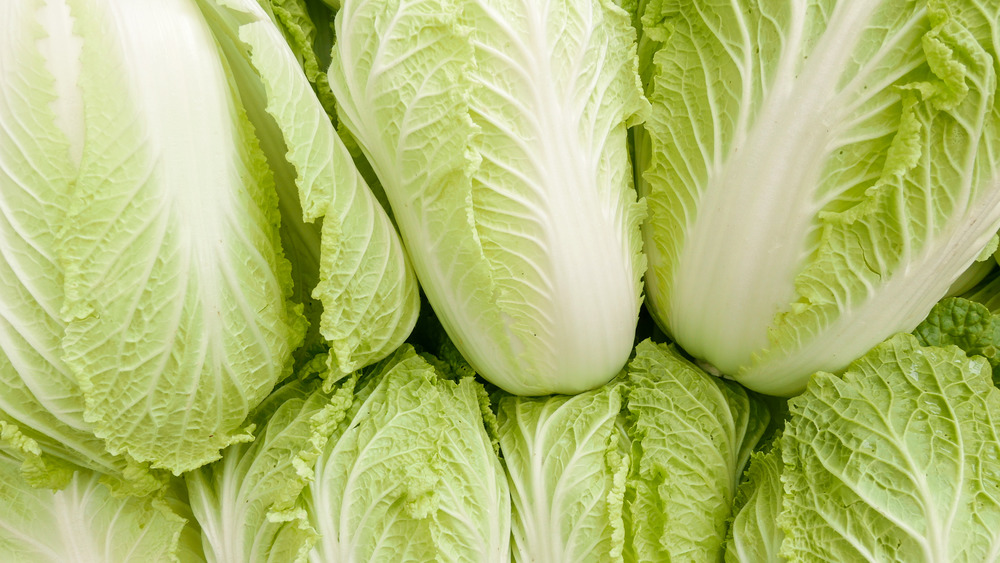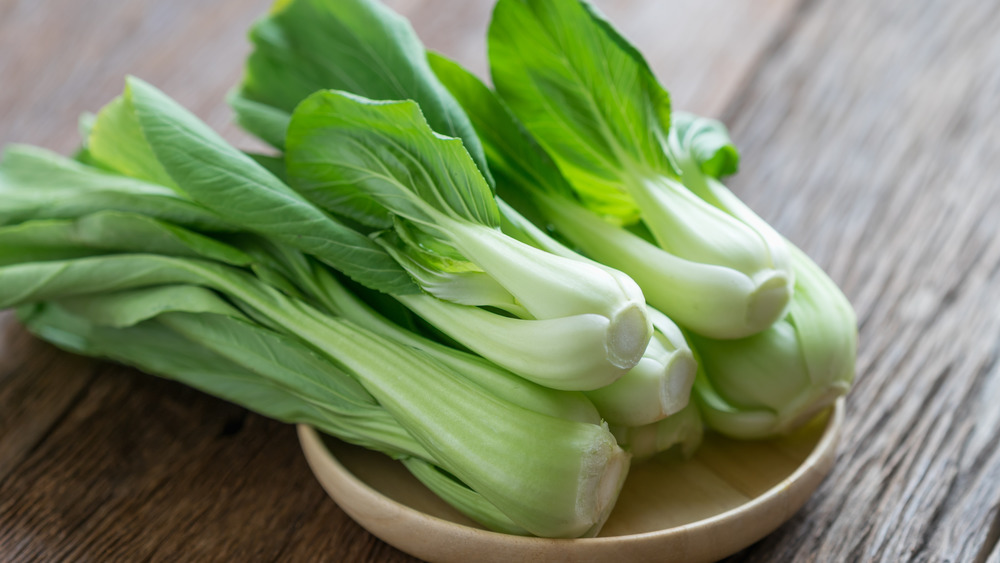The Actual Difference Between Bok Choy And Napa Cabbage
There comes a time when it seems everyone has to stand in the grocery store and choose between two ingredients that go by different names but are nearly identical. One of these pairings is bok choy and napa cabbage. Both technically fall into the group of "Chinese cabbage" or Brassica rapa and both can be used in a number of recipes. However, there are some slight differences to the educated palate.
Napa cabbage is an exceedingly common vegetable, and is likely what a recipe that calls for Chinese cabbage is referring to. Napa cabbage, or Pekinesis, is one of the two main groups of Chinese cabbage. It's the most widely grown vegetable in China and is often used in stir-fry recipes as well as noodles, salads, and more. The cabbage itself is usually oblong and tends to be white or very light green with firmly packed leaves. The leaves themselves tend to be ruffled with thick veins too. Raw napa cabbage has a mild flavor with a crisp texture, though it gets sweeter when it is cooked (via The Spruce Eats).
Bok choy is more flavorful than napa cabbage
Bok choy, or Chinensis, on the other hand, is the other main group of Chinese cabbage. Bok choy can also be used in many of the same recipes as napa cabbage, though the technique for cooking it is a little different. The stalks of bok choy are more fibrous. Therefore, it is common to remove the leaves from the stalks to cook the stalks first. This is also why bok choy is so good in stir fry. After the stalks are tender, the leaves can be added in since they require a lot less time to cook (via Devour Asia).
Overall, bok choy tends to be more flavorful than napa cabbage. The alternative Chinese cabbage has a more discernible flavor that can at times be bitter. So, the next time you try to decide between the two, know that bok choy can add a bitterness to your dish. Napa cabbage, however, can add a nice crispness. Either way, the cabbages are both welcome additions to many dishes in Asian cuisine.

